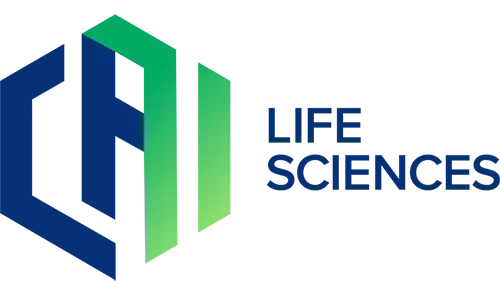As global regulations continue to evolve, life sciences companies are facing increasing pressure to meet stringent compliance requirements without slowing down innovation or compromising product safety and quality. The pressure is growing, not only to meet stringent and often diverging regulatory requirements, but to do so while maintaining speed, operational efficiency, and uncompromising product quality. This blog explores strategies that companies can adopt to turn regulatory complexity into a competitive advantage.
A Moving Target: The Global Regulatory Landscape
One of the foremost challenges for life sciences organizations is keeping pace with the ever-changing regulatory environment. Laws and standards are regularly updated to reflect technological advances, new risks, and shifting public expectations. For life sciences organizations, the situation is even more complex, with regional regulators evolving at different speeds and in different directions. Efforts like the International Council for Harmonisation (ICH) aim to bring structure and consistency, but divergence remains. Organisations pursuing global drug submissions must navigate differences in data granularity, documentation formats, submission timelines, and communication approaches, all while maintaining scientific consistency. This calls for an integrated, cross-functional regulatory strategy and strong operational readiness across the board.
Regulatory Innovation: A Global Shift
Regulators are not standing still. The European Medicines Agency (EMA), through its Regulatory Science Strategy to 2025, is taking significant steps to simplify and modernize the development and approval process. In parallel, EU institutions are advancing reforms under the revised General Pharmaceutical Legislation to streamline processes such as implementing regulatory sandboxes, phased reviews, and simplifying committee structures. These steps aim to move the EU away from a complex, multi-committee, multi-language system toward a more agile, cohesive framework ready for next-gen technologies
In the U.S., the FDA’s issued first draft guidance on ‘Considerations for the Use of Artificial Intelligence to Support Regulatory DecisionMaking for Drug and Biological Products.’ marking a pivotal shift in regulatory decision-making. The guidance introduces a risk-based framework for validating AI tools across all stages of the drug lifecycle. Beyond guidance, the FDA is piloting internal AI tools like Elsa and cderGPT to assist with summarizing adverse events, protocol analysis, and inspection risk assessment. These initiatives highlight a growing recognition that regulatory excellence must be both technologically enabled and scientifically grounded.
ICH Q9 Revision: Risk Management in the AI Era
The ICH Q9 guideline on Quality Risk Management was also recently revised (Q9(R1)) to reflect the growing integration of AI and digital solutions in life sciences. This update reinforces that traditional quality frameworks must evolve to manage the unique risks posed by AI-based systems.
Key expectations from the ICH Q9 revision include:
- Algorithm transparency: Companies must clearly understand and document the algorithms being used. Transparency is essential to allow for proper validation and regulatory review.
- Defined system autonomy: The level of autonomy granted to AI systems must be stated, and the associated risk level should be directly linked to that autonomy.
- Training data complexity: Organizations must detail the complexity and source of data used to train AI systems, including how this influences model behaviour and reliability.
- Revised change management: Change control procedures must be updated to account for AI-specific risks. This includes guidance on algorithm updates, model retraining, and system recalibration.
These expectations underscore the need for companies to treat AI not just as a tool, but as a regulated system with quality risks that must be proactively managed.
Leveraging Technology for Turning Compliance into a Strategic Advantage
Technology, particularly A,I is quickly becoming essential for managing compliance. Tools are now available to monitor global regulatory updates, flag emerging changes, and even predict regulator queries. When integrated into Regulatory Information Management Systems (RIMS), AI can also identify data gaps, monitor commitments, and support cross-regional submissions.
In supply chain operations, AI is proving equally valuable, particularly in supporting regulatory compliance and ensuring product integrity. Companies can now collect and consolidate supplier and external data, connect information across systems, and evaluate it to identify potential risk areas with greater precision. Advanced algorithms enable in-depth risk analysis and proactive mitigation strategies, strengthening both the chain of custody and adherence to regulatory expectations such as GMP and Good Distribution Practices. Importantly, AI enhances rather than replaces regulatory and compliance expertise. It empowers professionals to shift from manual, administrative tasks to strategic oversight, enabling more informed decision-making and driving both regulatory compliance and operational excellence.
In conclusion, regulatory complexity is no longer just a hurdle, it is a fundamental aspect of operating in the life sciences industry. Success today requires organizations to approach regulatory compliance with rigor, embedding it across all functions—from R&D and manufacturing to quality, supply chain, and regulatory affairs. By fostering cross-functional alignment, enabling real-time data visibility, and ensuring consistent oversight, companies can maintain agility while upholding high standards. Embracing updated frameworks such as ICH Q9, applying risk-based thinking, and leveraging intelligent technologies—particularly AI—further reinforce this foundation. Organizations that integrate compliance into their operational and technological core will not only meet evolving requirements but also enhance resilience, accelerate innovation, and remain competitive in a dynamic global market.
